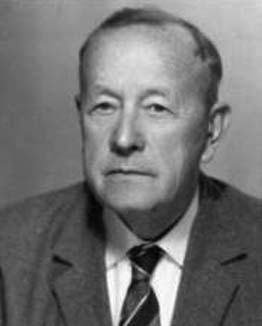


 تاريخ الرياضيات
تاريخ الرياضيات
 الرياضيات في الحضارات المختلفة
الرياضيات في الحضارات المختلفة 
 الرياضيات المتقطعة
الرياضيات المتقطعة
 الجبر
الجبر
 الهندسة
الهندسة 
 المعادلات التفاضلية و التكاملية
المعادلات التفاضلية و التكاملية 
 التحليل
التحليل
 علماء الرياضيات
علماء الرياضيات |
Read More
Date: 20-8-2017
Date: 17-8-2017
Date: 17-8-2017
|
Died: 23 March 1979 in Ljubljana, Yugoslavia (now Slovenia)

Ivo Lah attended elementary school in St. Vid nad Cerknico and in Ljubljana. Later he enrolled in the Klasicna gymnasium in Ljubljana where he graduated with top marks on December 12, 1915. He spent one at the University of Vienna in 1918 and a further seven semesters at the University of Zagreb in the years 1919-1922. He completed his studies of mathematics and physics in Zagreb on April 28,1925. At the same time he was studying at the School of Commerce and Traffic in Zagreb with a state exam on March 3, 1923. Before finishing high school Ivo Lah volunteered for the Austro-Hungarian army to defend the western borders of Slovenia. In the years 1915-1918 he was a Lieutenant in the Austrian army on the front against Italy.
After the end of WWI he served as a volunteer in the Koroska Legion defending and shaping the Slovenian (and Yugoslav) northern border with Austria. From April 1, 1921 until June 31, 1921 he was an Assistant for Mathematics at the Forestry Faculty of the University of Zagreb. From September 26, 1921 until October 1, 1950 he was an employee of the Social Security Foundation in Ljubljana, Zagreb and Belgrade. After that he was employed by the Federal Statistical Office in Belgrade until his retirement on December 31, 1956.
The Adriatic Insurance Company (Riunione Adriatica di Sicurita) based in Triest sent him to Vienna in the years 1927-1928 to study personal insurance. As a representative of the Society of Actuaries of the Kingdom of Yugoslavia Ivo Lah attended the International Congress of Actuaries in Rome (1934) and in Paris (1937).
In 1943 he was invited to Rome as an Assistant Dean of the Faculty of Statistical, Demographic and ActuHelvetica Sciences where he stayed only a Month due to WWII. From 1933 until 1941 he was an active member of the Society of Actuaries of Yugoslavia. In the years 1937-1941 he was the founding editor of the Journal Glasnik udruzenja aktuarjev Kraljevine Jugoslavije. Due to his scientific publications Ivo Lah became a correspondent of member of several international institutions from Portugal, Switzerland, Belgium, Italy, Germany and France.
Since 1932 when Ivo Lah became in charge of Statistics of Social Security in Slovenia he connected his work with studies at the University of Ljubljana. Students were able to prepare Seminars and other projects in Statistics. Based on the Statistics of Social Security several Doctoral Theses were written. Ivo Lah worked in practical Demographics and Statistics. Based on demographic tables he was able to prepare the so-called "computational bases" for personal life insurance and retirement insurance of employees.
His main work is a trilingual book Racunske osnovice zivotnog osiguranja written in Croatian, Russian and French and published in Zagreb in 1947. Because of a quote in Latin: Natura non facit saltus (Nature does not jump) the book was proclaimed "antimarxist", taken out of circulation and later, in 1951, was mostly destroyed. Ivo Lah was able to save some copies of the book. It is a tragic irony that he was later serving as a member of the Yugoslav delegation negotiating treaties with Italy, Hungary, Austria and West and East Germany. His book Racunske osnovice withstood the criticism of actuaries during the negotiations in Rome, Bonn and Vienna and he was able to get full Social Security compensation for Yugoslavia from these countries. Ivo Lah was a prolific writer and he published several hundred newspaper articles.
His scientific bibliography contains about 120 items covering a wide spectrum of topics from Mathematics to Statistics, Demographics, etc. For instance one can find 10 items in Maths Reviews, and 19 items in Zentralblatt für Mathematik. His most important mathematical result, published in 1955, is the so-called "Lah identity" where he shows how the rising powers can be expressed in terms of falling powers. The reviewer of his paper was a leading combinatorialist of that time, John Riordan.
The binding coefficients L(n, k) = n! (n-1)!/(k-1)!/(n-k)!/k! were called unsigned Lah numbers by J Riordan in his book An Introduction to Combinatorial Analysis (1958). The unsigned Lah numbers L(n, k) have an interesting combinatorial interpretation. Namely they count the number of ways to partition a set of nelements into k nonempty linear queues.
Acknowledgement. I would like to thank Prof. Marija Lah, the daughter of Ivo Lah for the material that is used in this presentation.
Article by: Tomaz Pisanski University of Ljubljani, Slovenia
August 2002



|
|
|
|
مخاطر عدم علاج ارتفاع ضغط الدم
|
|
|
|
|
|
|
اختراق جديد في علاج سرطان البروستات العدواني
|
|
|
|
|
|
|
مدرسة دار العلم.. صرح علميّ متميز في كربلاء لنشر علوم أهل البيت (عليهم السلام)
|
|
|